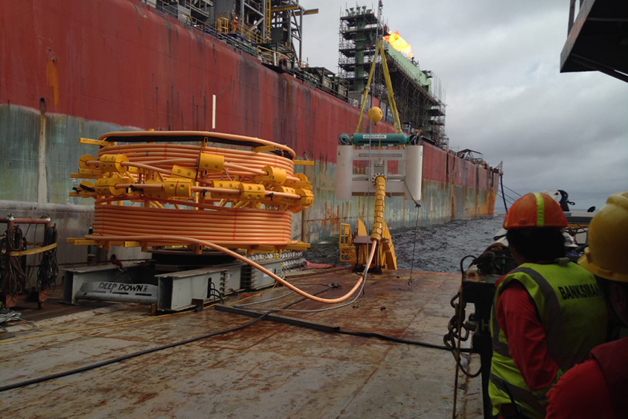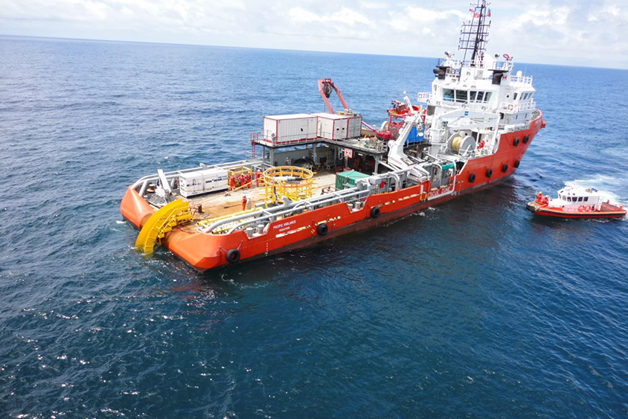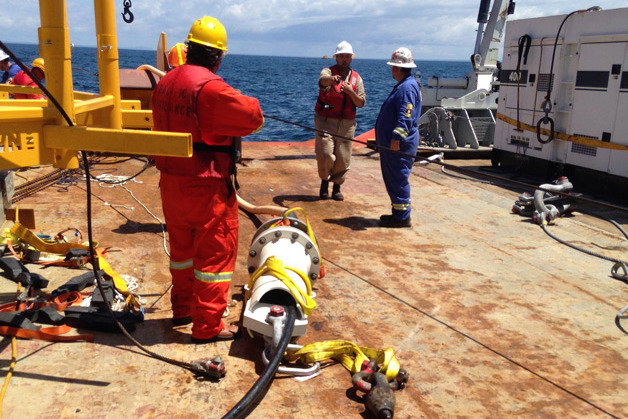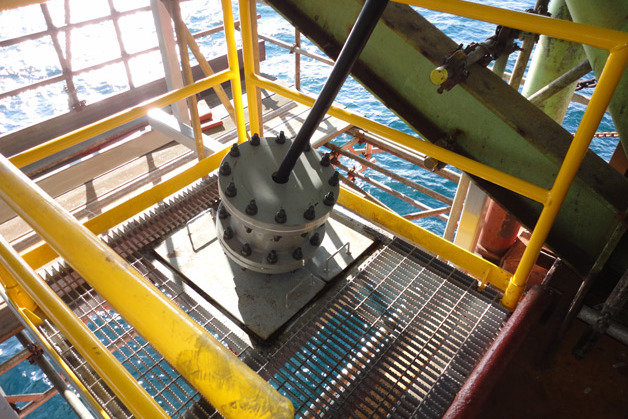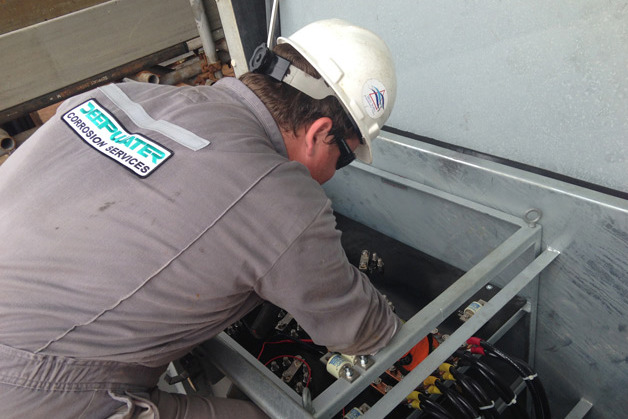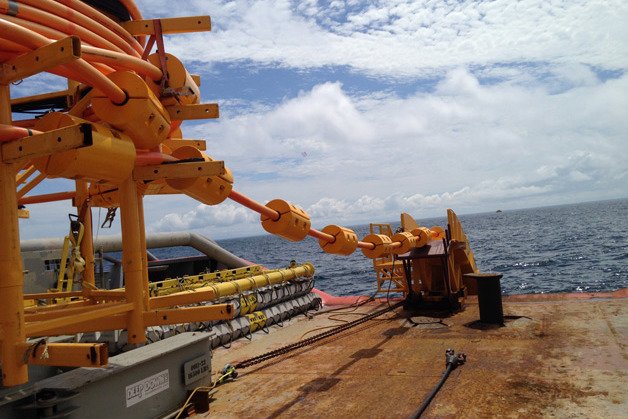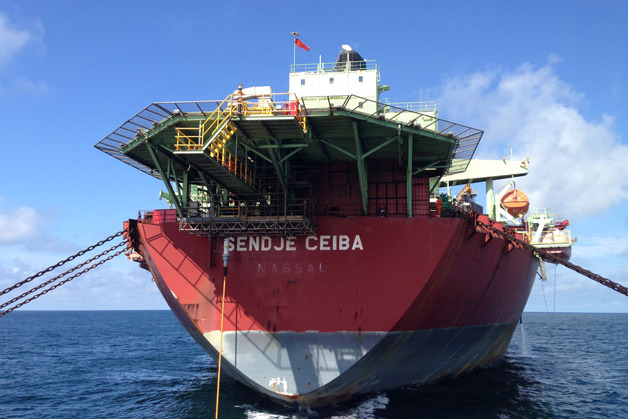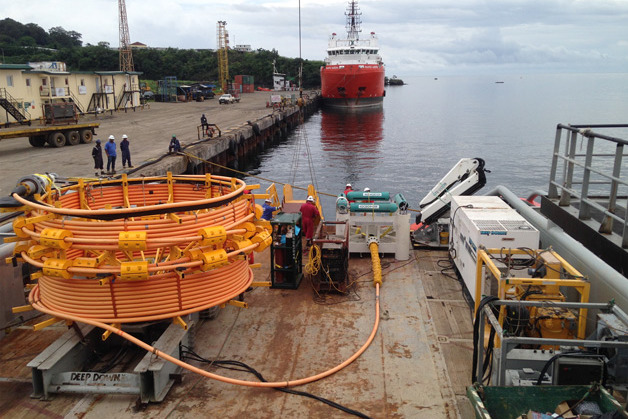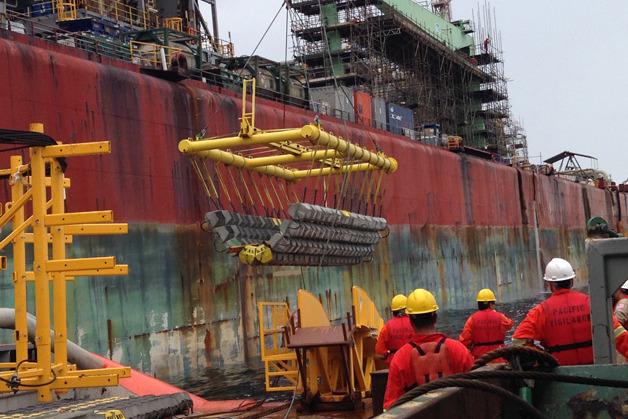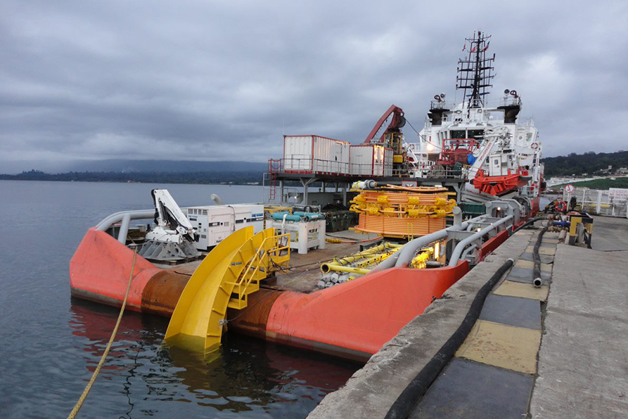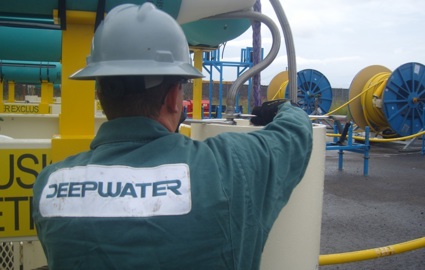Sendje Ceiba
FPSO near Equatorial Guinea retrofitted with RetroBuoy™ ICCP sled

Sendje Ceiba FPSO protected by Deepwater’s RetroBuoy™ ICCP anode sled
Deepwater was contracted to upgrade the FPSO’s cathodic protection system for a 20-year life extension.
A 2007 underwater survey indicated that the hull-mounted sacrificial zinc anodes of the FPSO were near depletion. This was confirmed during a 2011 underwater survey followed by a 2013 drop cell survey. The data from the surveys indicated the sacrificial anodes were still depleting at a constant rate. A preliminary engineering analysis estimated a retrofit would be required by 2016 (9 years from the time of the 2007 survey) to prevent the asset from depolarizing towards unprotected potentials.
Multiple options were evaluated and a seabed-mounted ICCP system was chosen from the technically feasible solutions as the most cost-effective and most efficient. One of the key decisions in this process was the anchoring configuration of the FPSO.
Download Case Study (LTR)
Download Case Study (A4)
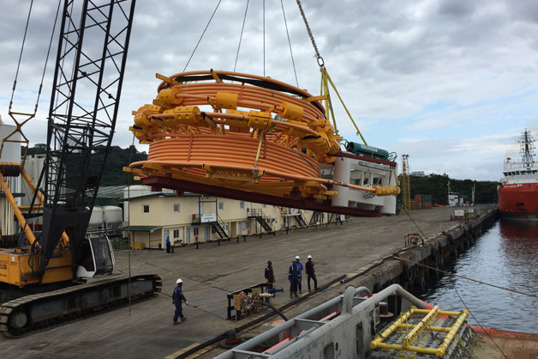
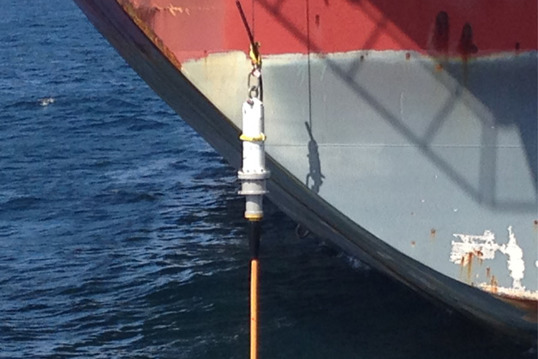
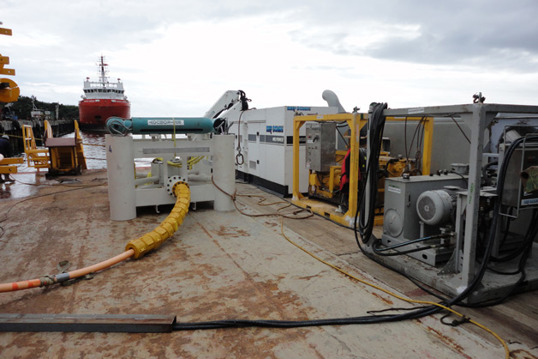
Deepwater was contracted to design, supply, manufacture, and oversee installation of the cathodic protection system life extension.
The CP retrofit system installed on the FPSO near Equatorial Guinea is a single RetroBuoy™ with four individual floats, each containing three anodes for a total of 12 anodes working in parallel. The power supply is a single TR unit located topside. The anode and power supply are connected by a single run of multi-core subsea anode power cable routed from the anode sled through the riser support structure to the riser gantry, and interconnecting DC positive cables between the TR unit and the hang-off point. The circuit is completed using a negative drain box and associated cable connecting the TR negative output to the structure. The power cable was deployed with a lazy wave configuration to accommodate the movement of the vessel. This single subsea anode unit and the associated topside equipment replaces the FPSO’s original 332 zinc anodes.
Prior to installation and fabrication, a detailed engineering phase was performed to evaluate the electrical and mechanical specifications of the system. Detailed calculations were performed to verify the current output requirements, voltage drops, allowable heat rise and mechanical integrity of the components. The anode position was refined to verify an acceptable current distribution and propose allowable installation tolerances.
Prior to deployment, the cable was spooled onto a horizontal drum and the buoyancy modules attached. The subsea power cable was pre-attached to the anode module and lifted as single piece onto to the ROV support vessel ready for installation.
A messenger wire from the FPSO winch was lowered down to the water line and with assistance from the support vessel, the winch wire was transferred to the back deck of the support. The winch wire was then securely attached to the pad eye at the top of the pulling head. The pulling head was deployed subsea and pulled through the hang off porch and secured into the split flange.
Once the cable was fully deployed, a concrete stabilization mattress was added near the touchdown location to minimize cable walking.
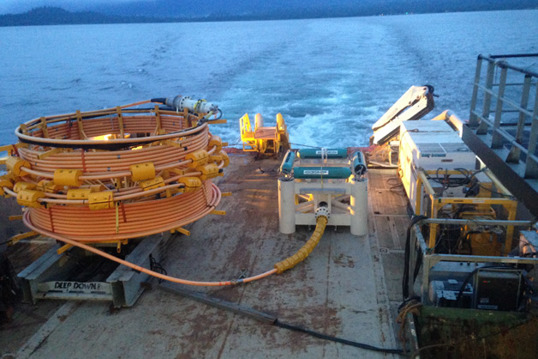

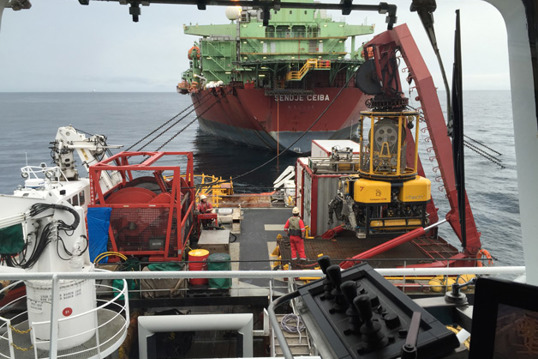
An as-built survey was conducted using the ROV. During the survey the following was checked:
- RetroBuoy™ placement and orientation
- Cable placement and orientation
- Module placement
- Concrete mattress placement and orientation
Prior to energizing the ICCP system, a baseline drop cell CP survey was performed to assess platform potentials. Readings were taken every 10-25 ft. (3-8 m) of water depth at the aft, mid-ship, and bow on both port and starboard sides of the FPSO. The pre-retrofit potentials range indicate the vessel was still protected, however, only barely above criteria.
The objectives of the commissioning were as follows:
- Polarize all portions of the hull to protected potentials (more negative than (-) 800mV vs. Ag/AgCl) without exceeding (-) 1150mV.
- Negatively shift potentials on all areas of the hull at least 20mV (from pre-energize to post-energize) without exceeding (-)1150mV on any portion of the hull.
- Continue polarizing until all parts of the FPSO were (-)900mV or more negative not exceeding (-) 1150mV
The hull of the FPSO was allowed to polarize overnight (12 hours). The final CP readings ranged from (-) 979mV to (-) 1058mV and the rectifier was functioning as designed and at the expected output calculated during the detailed design.
A complete handoff was provided to the end client including a commissioning report and operation manual.
